Abstract
Controversy over the impact of multiple testing procedures in linkage analysis is reexamined in this report. Despite some recent claims to the contrary, it is shown that testing multiple markers decreases the posterior false-positive rate among significant tests, rather than increasing it; this is true whether the trait of interest is simply monogenic or complex, or even if the genetic model is misspecified. However, if the true mode of inheritance is complex, or if the genetic model is misspecified, the power to obtain a significant result when linkage is present may be reduced, while the significance level is not, leading to an inflation of the posterior false-positive rate. Furthermore, the posterior false-positive rate increases with decreasing sample size and may be unacceptably high for very small samples. By contrast, testing multiple genetic models, by varying either mode-of-inheritance parameters or diagnostic categories, does lead to an inflation of the posterior false-positive rate. A conservative correction for this case is to subtract log10t from the obtained maximum lod score, where t different genetic and/or diagnostic models have been tested.
Full text
PDF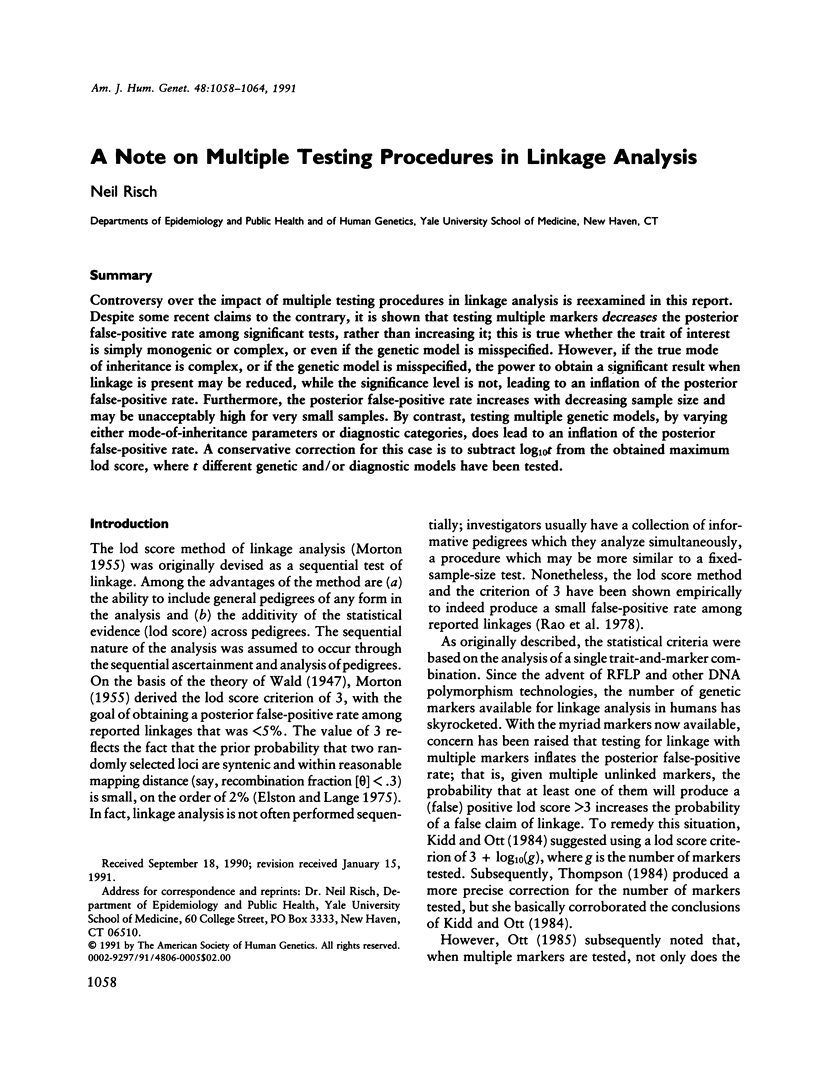
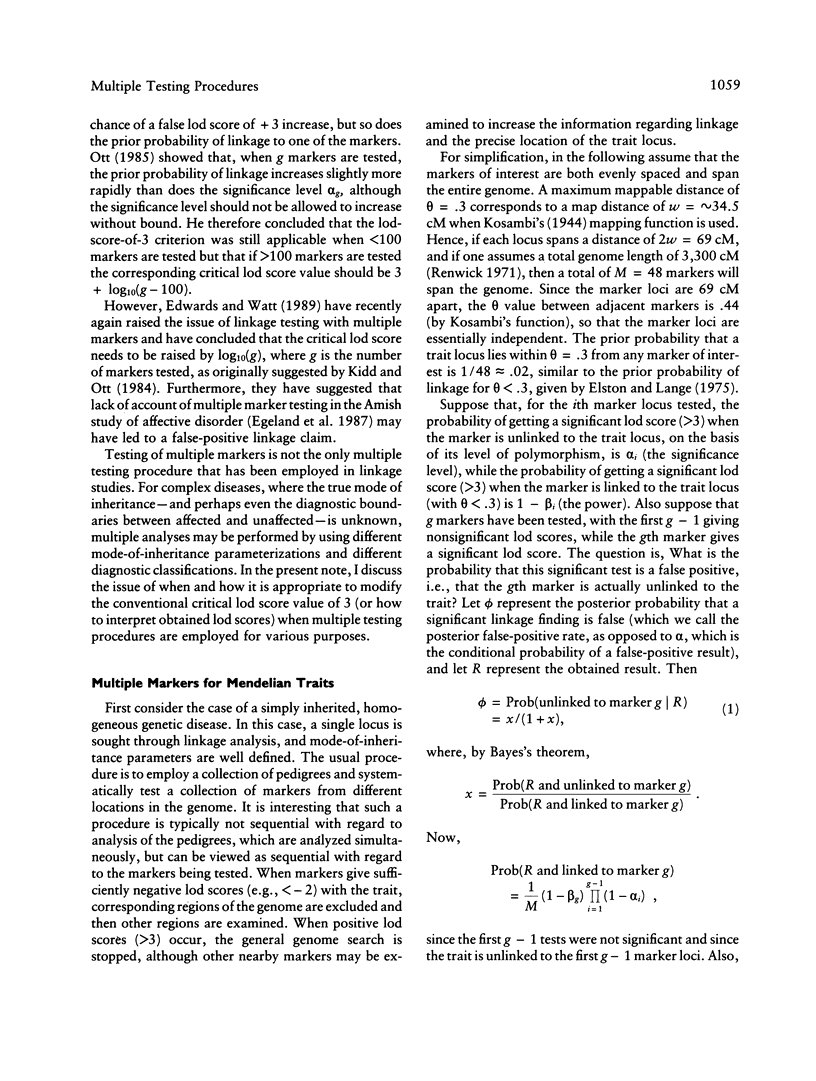
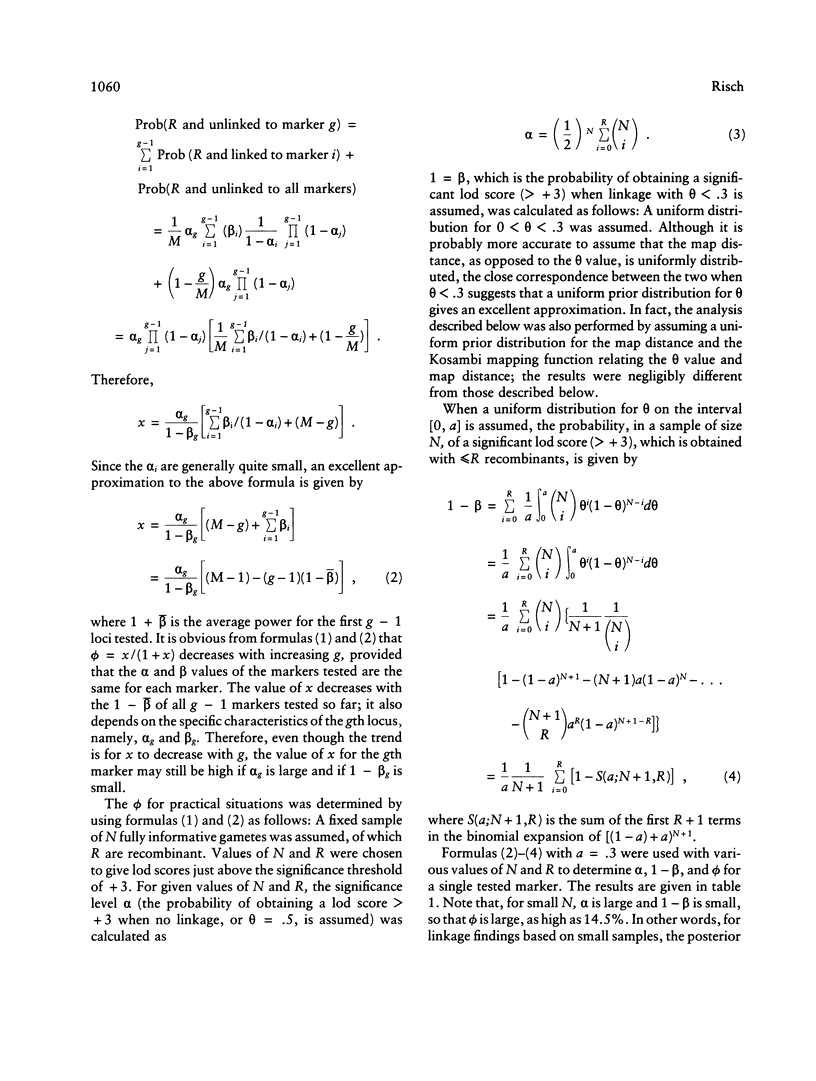
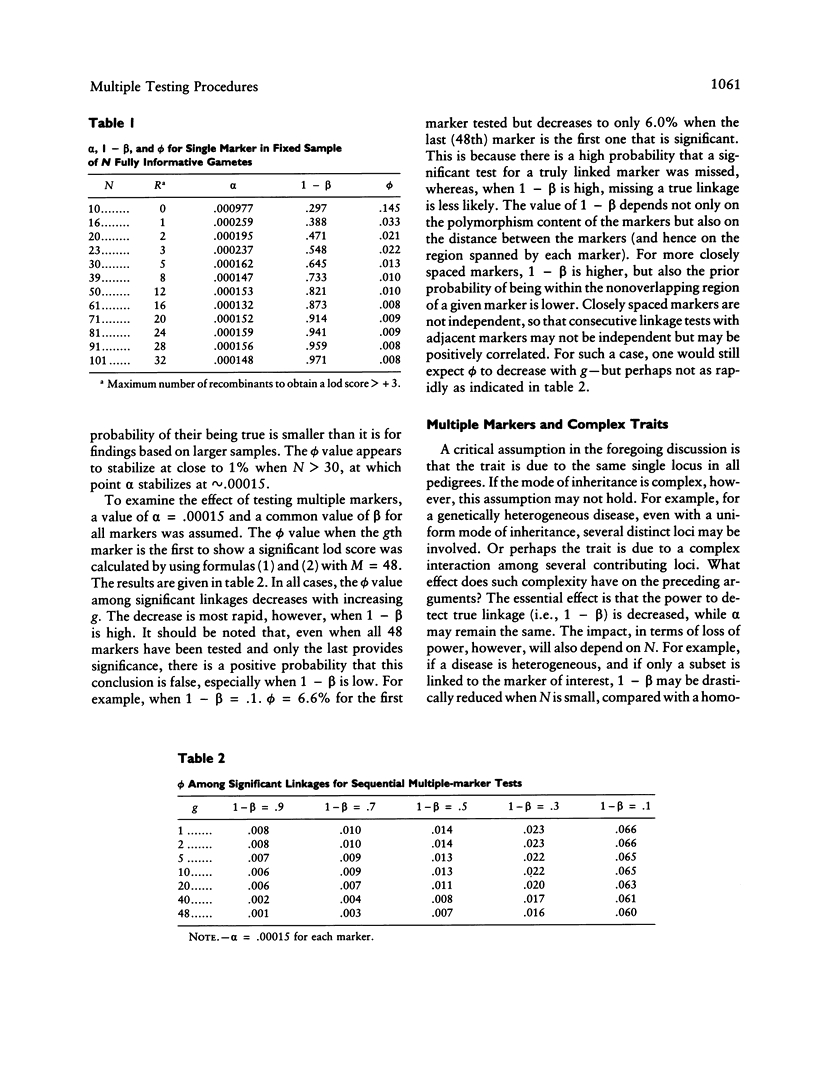
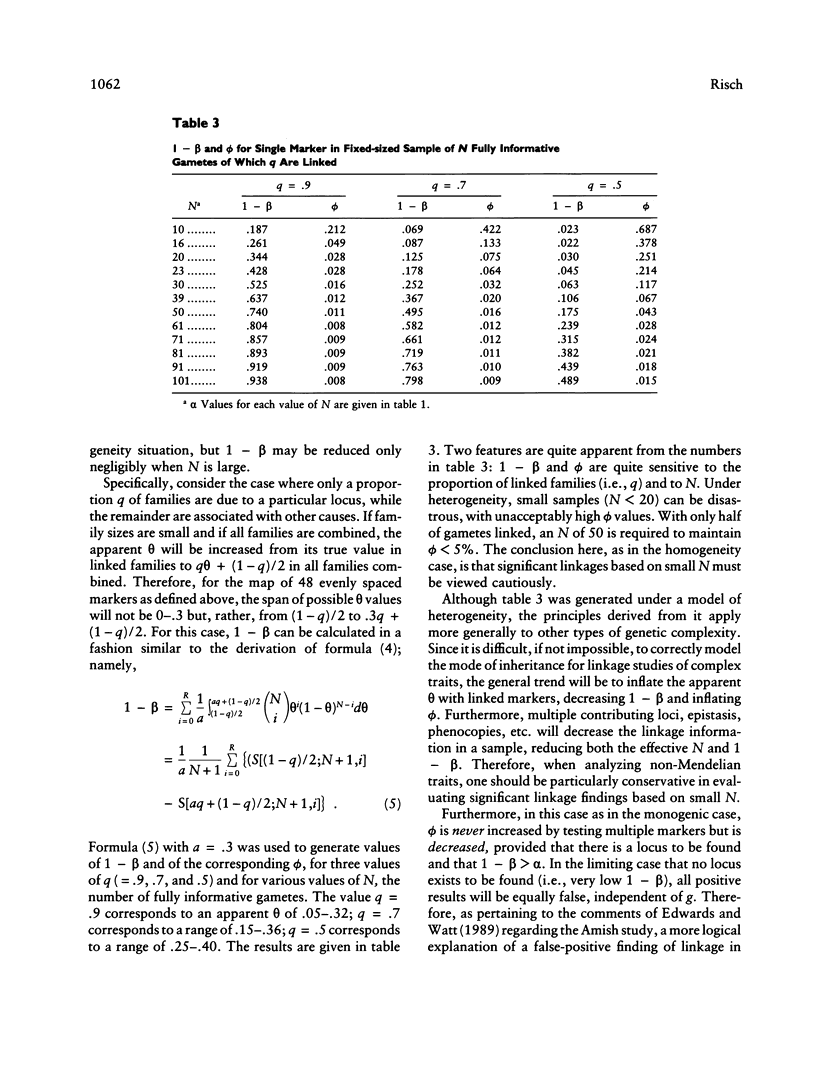
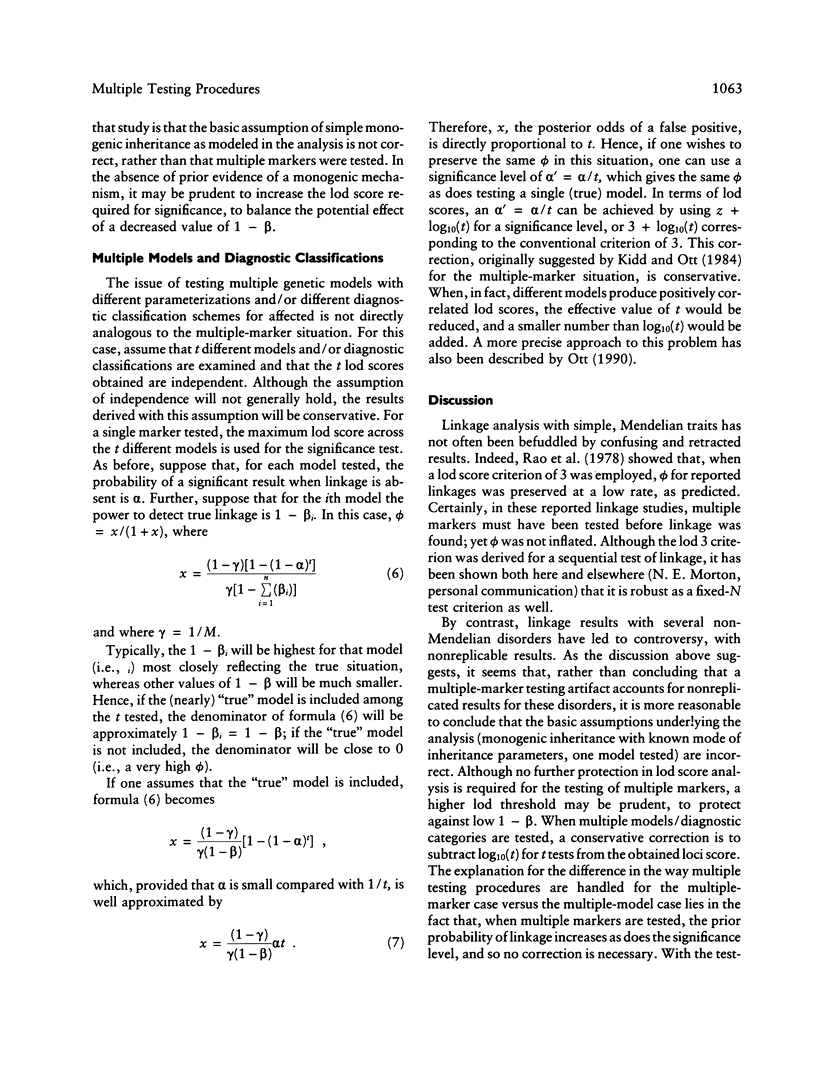
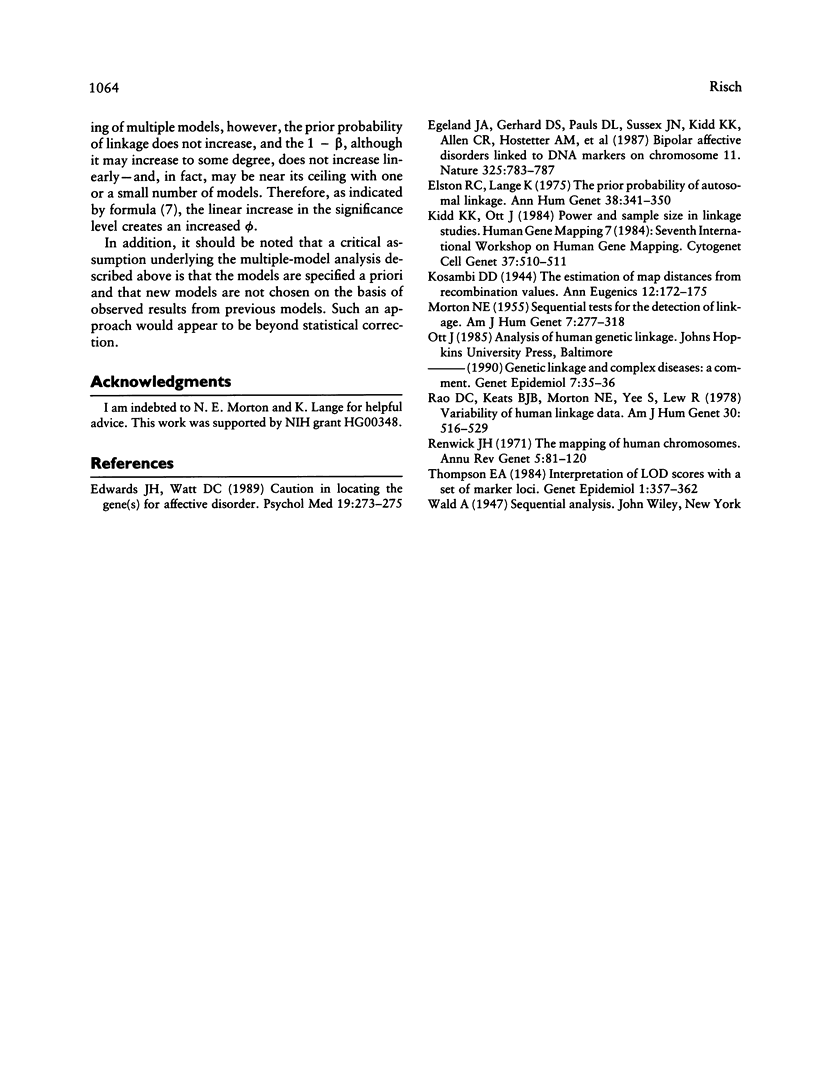
Selected References
These references are in PubMed. This may not be the complete list of references from this article.
- Edwards J. H., Watt D. C. Caution in locating the gene(s) for affective disorder. Psychol Med. 1989 May;19(2):273–275. doi: 10.1017/s0033291700012307. [DOI] [PubMed] [Google Scholar]
- Egeland J. A., Gerhard D. S., Pauls D. L., Sussex J. N., Kidd K. K., Allen C. R., Hostetter A. M., Housman D. E. Bipolar affective disorders linked to DNA markers on chromosome 11. 1987 Feb 26-Mar 4Nature. 325(6107):783–787. doi: 10.1038/325783a0. [DOI] [PubMed] [Google Scholar]
- Elston R. C., Lange K. The prior probability of autosomal linkage. Ann Hum Genet. 1975 Jan;38(3):341–350. doi: 10.1111/j.1469-1809.1975.tb00619.x. [DOI] [PubMed] [Google Scholar]
- MORTON N. E. Sequential tests for the detection of linkage. Am J Hum Genet. 1955 Sep;7(3):277–318. [PMC free article] [PubMed] [Google Scholar]
- Rao D. C., Keats B. J., Morton N. E., Yee S., Lew R. Variability of human linkage data. Am J Hum Genet. 1978 Sep;30(5):516–529. [PMC free article] [PubMed] [Google Scholar]
- Renwick J. H. The mapping of human chromosomes. Annu Rev Genet. 1971;5:81–120. doi: 10.1146/annurev.ge.05.120171.000501. [DOI] [PubMed] [Google Scholar]
- Thompson E. A. Interpretation of LOD scores with a set of marker loci. Genet Epidemiol. 1984;1(4):357–362. doi: 10.1002/gepi.1370010407. [DOI] [PubMed] [Google Scholar]


